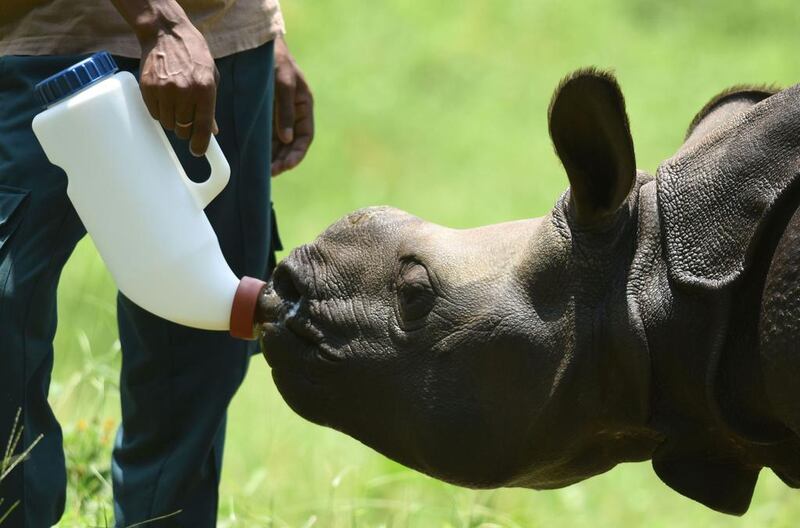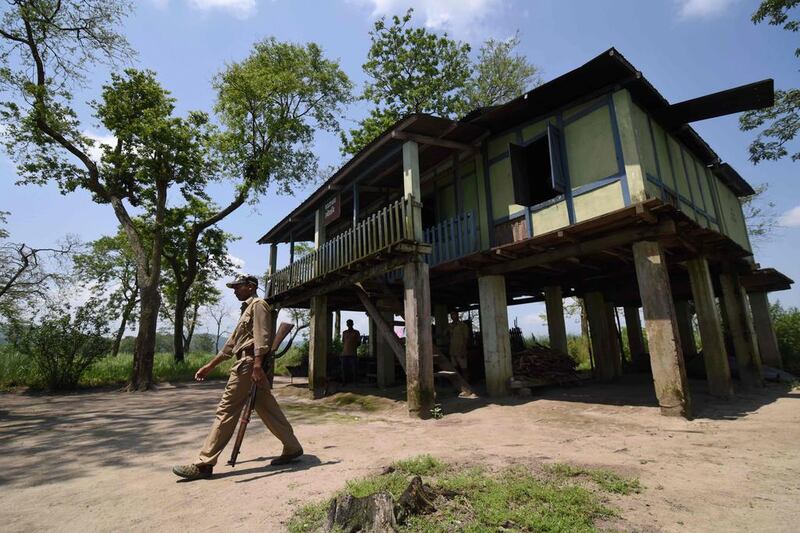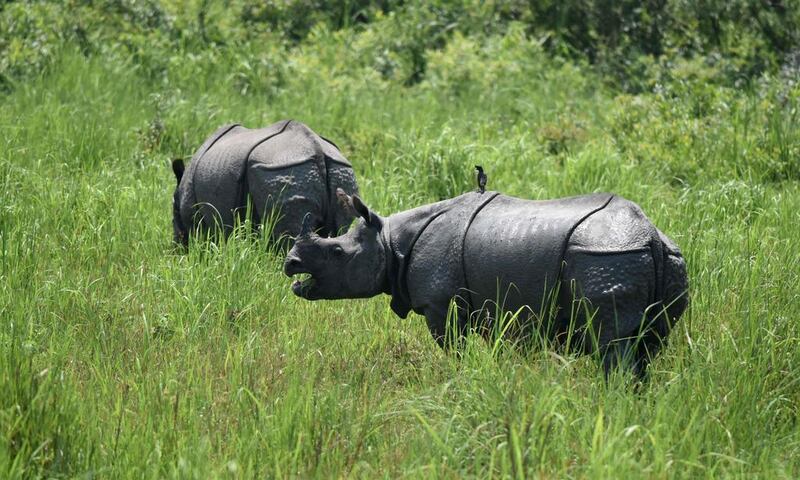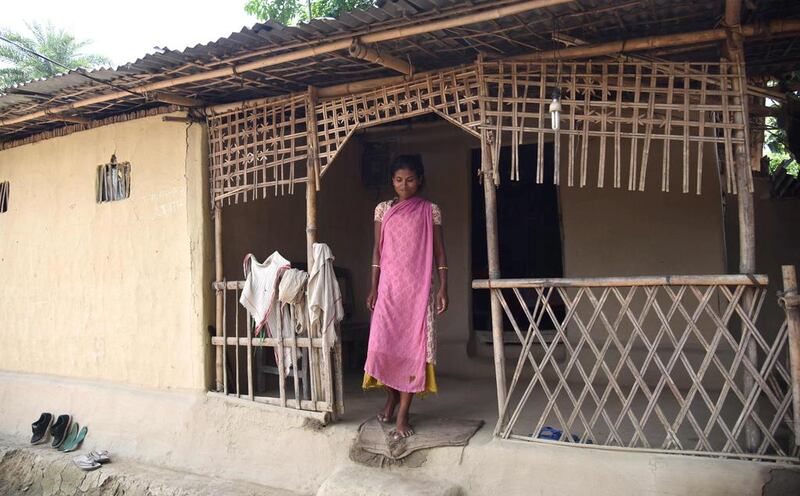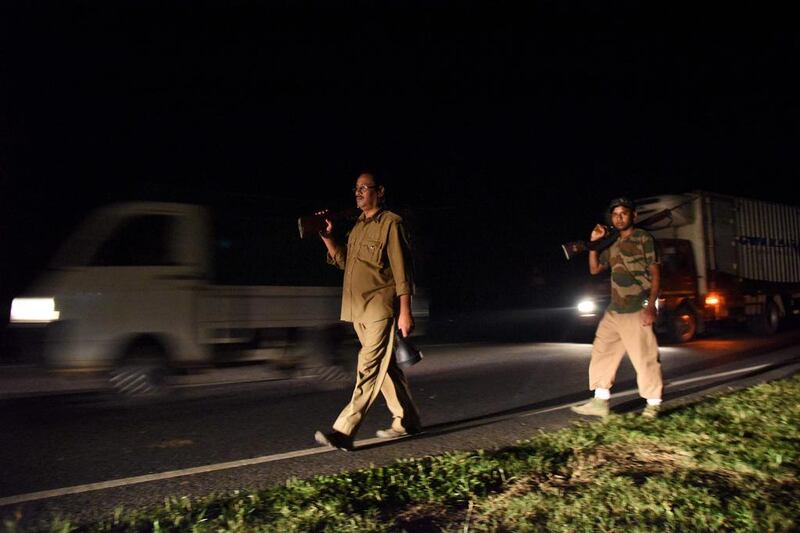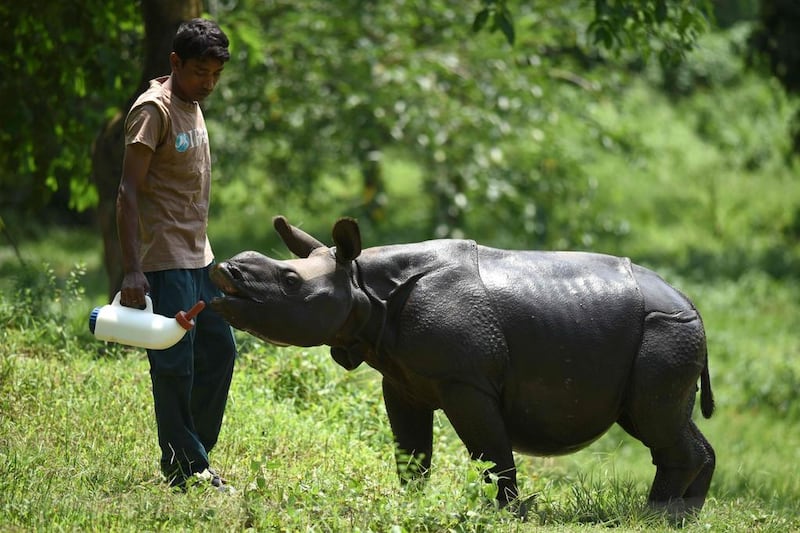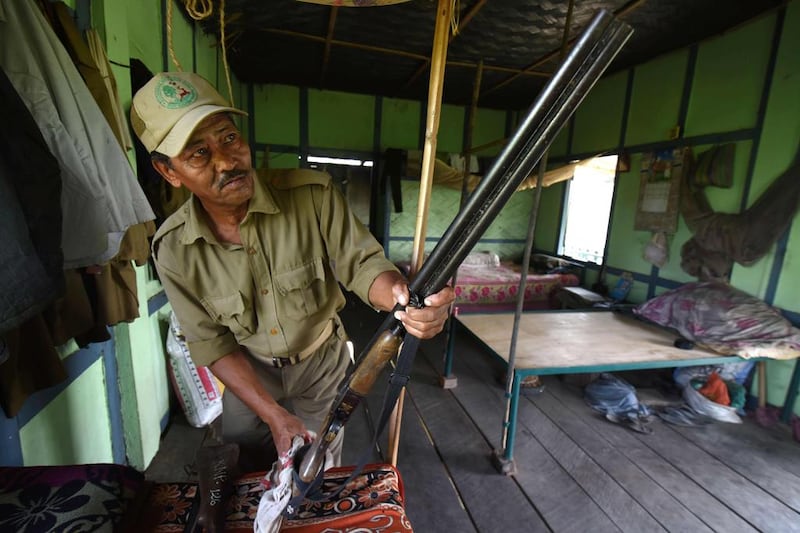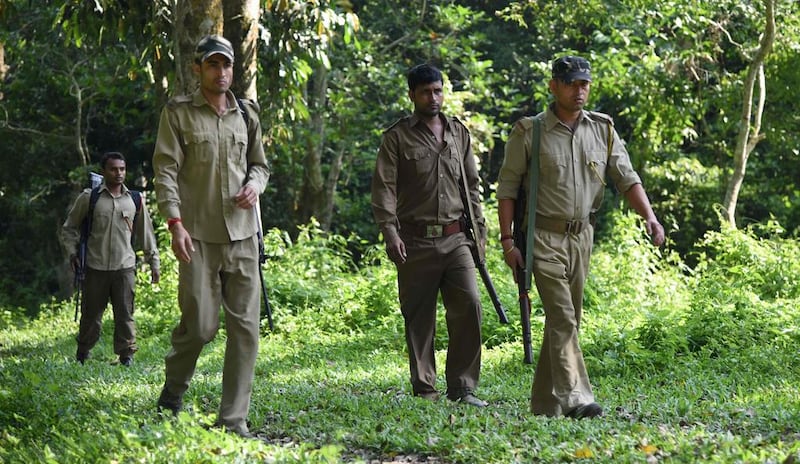India’s greater one-horned rhinoceros population has increased by 200 over the past four years, the latest government survey on the once-endangered species has found.
The census was conducted last week at Kaziranga National Park in north-eastern Assam state — a Unesco World Heritage Site and one of the last natural habitats for the rare rhinoceros in the world.
Greater one-horned rhinos are the largest of the rhinoceros species and for decades faced the brunt of poaching for their keratin-made horns, a crucial ingredient in traditional Chinese medicines.
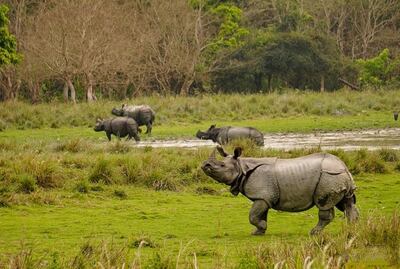
But on Wednesday park officials said 2,613 rhinos were living in the protected zone spread over 430 square kilometres.
Around 275 of them were juveniles and 146 were calves.
“The increase in population is within the normal growth rate and population pattern. Kaziranga has viable conditions for their habitation and growth. The park has a very dynamic ecosystem,” Ramesh Gogoi, divisional forest officer, told The National.
A total 64 enumerators mounted on 50 elephants and more than 250 ground staff were involved in the census that was previously conducted every six years but now will be done every four years, Mr Gogoi said.
More than a dozen independent observers were part of the programme that saw extensive use of technology such as drones, binoculars and GPS.
The 2018 census had found 2,413 rhinos but since then a series of devastating floods in the state left at least 400 of them dead, several Indian media reports suggested.
The park is located on the floodplains of the Brahmaputra River and is frequently flooded during the annual monsoon seasons that have intensified in recent years due to climate change.
Authorities have built high mud platforms across the park to allow rhinos to take refuge during flooding, a move experts say is helping the animals survive the natural calamity that has become the biggest killer of the rare animal after poaching.
India burns 2,500 rhino horns in conservation ceremony
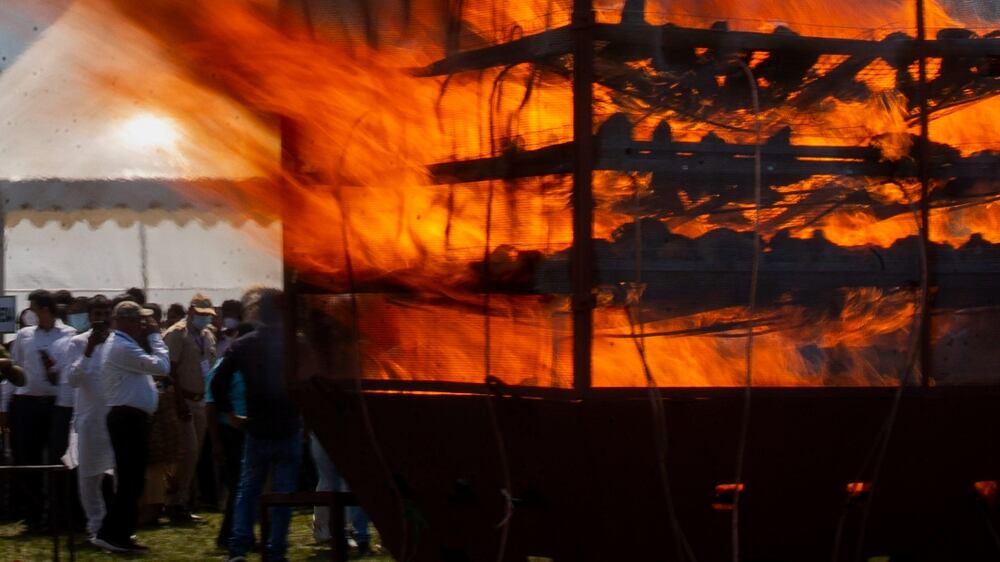
The mammals were declared an endangered species in 1975 after their numbers had dropped to a few hundred.
But over the decades, the rhino population has grown remarkably at the park with the efforts of conservationists and dedicated forest guards, some of them armed with AK-47 rifles.
They were downgraded from endangered to vulnerable in the 2008 Red List of the International Union for Conservation of Nature.
Only adult males have horns that can measure up to 10 inches and weigh three kilograms. The animals use the horns to protect their calves, dig for water and defend territory.
While the horns are made of keratin like the hooves of a horse or human nails, they are widely smuggled for the belief that they hold medicinal and aphrodisiacal properties.
The horn, a tightly packed bunch of hair, is also becoming a status symbol in Vietnam.
Last September, the Assam government burnt nearly 2,500 horns to mark the World Rhino Day with the aim of busting myths related to rhino horns.
Cases of poaching have dropped to 86 per cent at the park from 12 in 2016 to one in 2021 — the lowest in two decades.
One rhino was killed by poachers in January this year.
